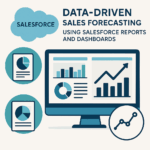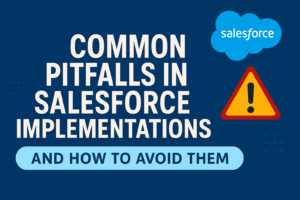BLOG
The Beginner’s Guide to Revenue Performance Management
What is revenue performance management anyway?
“Revenue Performance Management (RPM) is a systematic approach to identifying the drivers and impediments to revenue, rigorously measuring them, and then pulling the economic levers that will optimize marketing ROI and top line growth” – Oracle Marketing Cloud
At a very basic level, the goal of using RPM is to continually analyse buyer response to mitigate risk, predict outcomes and opportunities, and build revenue growth. RPM processes are applicable through every level of your organisation.
The goal is to move prospects through the funnel.
Used in conjunction with marketing automation software, there is incredible potential for revenue growth.
The big idea
Examine, execute, repeat, and repeat again.
The key process behind effective RPM is perpetually measuring and analysing results that you can then use to create actionable insights for implementation across future campaigns.
Step 1: Uncovering your sales pipeline
For a fully integrated approach, really get to know your sales team and how they use their CRM. The shift in responsibility from Sales to Marketing means that you now have the power to create a cohesive partnership between the two departments.
Understanding everything from how they track sales quotas and route leads, to their processes for forecasting sales will better inform the way you manage leads and filter them through the funnel. From there, we simply revert back to the big idea: examine, execute and repeat.
Key questions for analysis:
- How often are deals entering the pipeline?
- What proportion of prospects become won opportunities?
- What is the quality of the data coming through?

Step 2: The secret to generating demand
This is one of the key areas that Marketing really comes out to shine. What demand generation really comes down to is being able to create communications that possess the relevant messaging and is sent out at a time that recipients can best engage with the content – essentially personalising the content wherever possible. This might mean that you send emails out at specific times because you have international contacts, or that you only send emails that contain the product offering that a contact is interested in.
Personalised content relies on immaculate data quality. That is, ensuring that your data is in the right format, keeping it consistent, and continuing to add to it wherever possible by creating programs that continually standardise your data and find new opportunities to expand the quality of your data.
You can then create richer content for your nurture streams. With more and more data fields being completed, you can better utilise field merges and dynamic content.
Once again, we then move onto examining data and executing processes to optimise the effectiveness of any campaigns being run.
Key questions for analysis:
- How complete is your data?
- What programs/strategies can you implement to add more value to your data?
Step 3: How to effectively manage leads
In Step 3, Marketing and Sales reconvene to establish metrics such as benchmarks and KPIs, with the goal of aligning the lead scoring model with service level agreements (SLAs). From there, we can more easily optimise lead quality and lead flow.
Lead scoring is one of the few things that truly bridges the gap between Marketing and Sales, making it an extremely crucial task. However, lead scoring models are not built equal and do require consistent updates, whether that is conducted every time you reach a contact milestone or each time you change management.
Lead scoring models rely on predictive ranking, whereby inbound responses are ranked against each other in order to understand which contact actions and attributes are associated with prospects who are most likely to buy.
Your sales team knows your buyer best. Everything from how they want to be contacted and their preferred time of contact to what information they’re looking for. This is crucial for building your initial model and for making improvements. For example, knowing how contacts prefer to be contacted can inform how your determine the weighting for different categories in your lead scoring model. This might mean that when targeting a younger audience, you value SMS opens more than email opens.
Key questions for analysis:
- Is your lead scoring model accurately predicting leads that will close?
- How are you assigning scores to characteristics and actions? Are these the most telling signs of an ideal buyer?
- What is the threshold for determining a warm lead? Can it be altered to reflect a more accurate depiction of a warm lead?

Step 4: Where to find the revenue
Throughout the entirety of the RPM process, you are constantly revising and implementing changes to improve the overall revenue generation. Along the way, you encounter various revenue metrics, including email and campaign metrics, lead scoring metrics and closed-loop reporting metrics.
Compiling this huge set of metrics and defining which ones have made the biggest impact on revenue creation is the basis for approaching big decisions in your organisation and discovering where your opportunities lie.
With revenue performance management, the adage “if at first you don’t succeed, try, try again” has never been more relevant. The key is to aim for consistent and continual improvements based on insights found across both Marketing and Sales. Having revenue in mind at every point ensures that everyone in your organisation understands where their focus is and how their work contributes.











